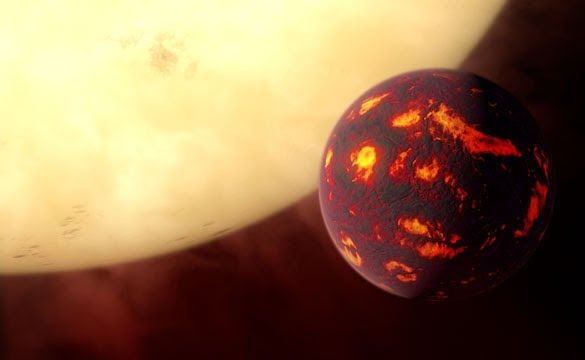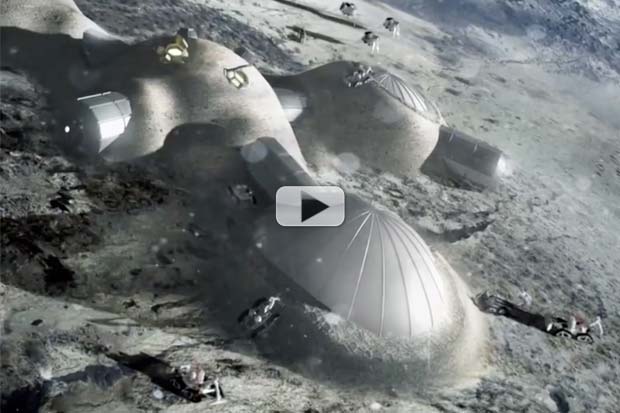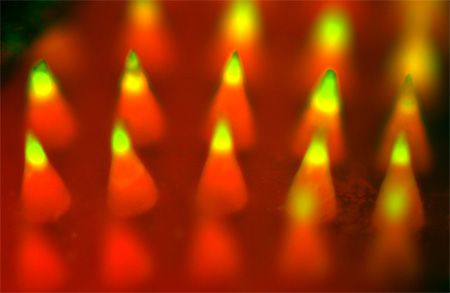But good luck breathing in the bone-crushing gravity.
Hell has an address: 55 Cancri-e is the first alien planet to have some of its surface features directly observed. And it’s no tropical paradise.
For some time 55 Cancri-e has been considered “strange.” Some felt it may be made of diamond. Others suggested it was covered in exotic fluids.
So an international team of astronomers headed up by the University of Cambridge has examined data captured by NASA’s Spitzer Space Telescope about this 40 light-year-distant “super-Earth.”
Sounds great — as long as we don’t call it a Moon Village. That sounds inane.
The director general of ESA, Johann-Dietrich Woerner, believes that the world should collaborate to create a permanent lunar base for “science, business, tourism or even mining.” Plans to use robotics and 3D printing for building the base have been discussed.
It’s not often you come across a real-life mad scientist. They’re usually just over-the-top antagonists in comic books, but Colin Furze is the real thing. He has a penchant for building things that often blow up—on purpose—like this impossibly dangerous-looking thermite cannon.
Not familiar with thermite? It’s an especially nasty chemical composition made of metal power and oxide that burns as hot as 2,500 degrees celsius. If it ignites, you don’t want to be anywhere near it, which is why a cannon that puts a lot of distance between you and a flaming thermite grenade isn’t the world’s worst idea.
This Bitcoin 101 series of videos was made to give you the facts about what Bitcoin is, where it came from, how it works, and where it’s going. Guided by longtime Bitcoiners Tatiana Moroz and Stephanie Murphy, this will give you everything you need to know about the booming cryptocurrency.
Black-hole computing.
Might nature’s bottomless pits actually be ultra-efficient quantum computers? That could explain why data never dies.
“What is the best way to get from A to B by public transit? Google Maps is answering such queries for over 20,000 cities and towns in over 70 countries around the world, including large metro areas like New York, São Paulo or Moscow, and some complete countries, such as Japan or Great Britain.”
Too soon to say whether Tabby’s Star, the Kepler star that garnered all the headlines late last year, actually harbors an alien megastructure or not. A new crowdfunding effort to fund global network of observations for the next two to three years should help resolve the matter. Don’t hold your breath.
Astronomers still can’t rule out the presence of an alien megastructure around Kepler star KIC 8462852 — located nearly 1500 light years away in the constellation of Cygnus. Strange dips in the star’s luminosity over four years of observations with NASA’s Kepler space telescope initially fueled such speculation, even though most of it was quickly dismissed.
But the currently most favored natural explanation for the strange light curves — a swarm of intervening planetary or cometary debris — remains largely unsatisfying. Thus, next month, a Kickstarter campaign will fund new ground-based observations to begin this summer that should bring more clarity to the situation.
Biomedical engineering researchers at North Carolina State University and the University of North Carolina at Chapel Hill have developed a technique that uses a patch embedded with microneedles to deliver cancer immunotherapy treatment directly to the site of melanoma skin cancer. In animal studies, the technique more effectively targeted melanoma than other immunotherapy treatments.
According to the CDC, more than 67,000 people in the United States were diagnosed with melanoma in 2012 alone – the most recent year for which data are available. If caught early, melanoma patients have a 5-year survival rate of more than 98 percent, according to the National Cancer Institute. That number dips to 16.6 percent if the cancer has metastasized before diagnosis and treatment. Melanoma treatments range from surgery to chemotherapy and radiation therapy. A promising new field of cancer treatment is cancer immunotherapy, which helps the body’s own immune system fight off cancer.








